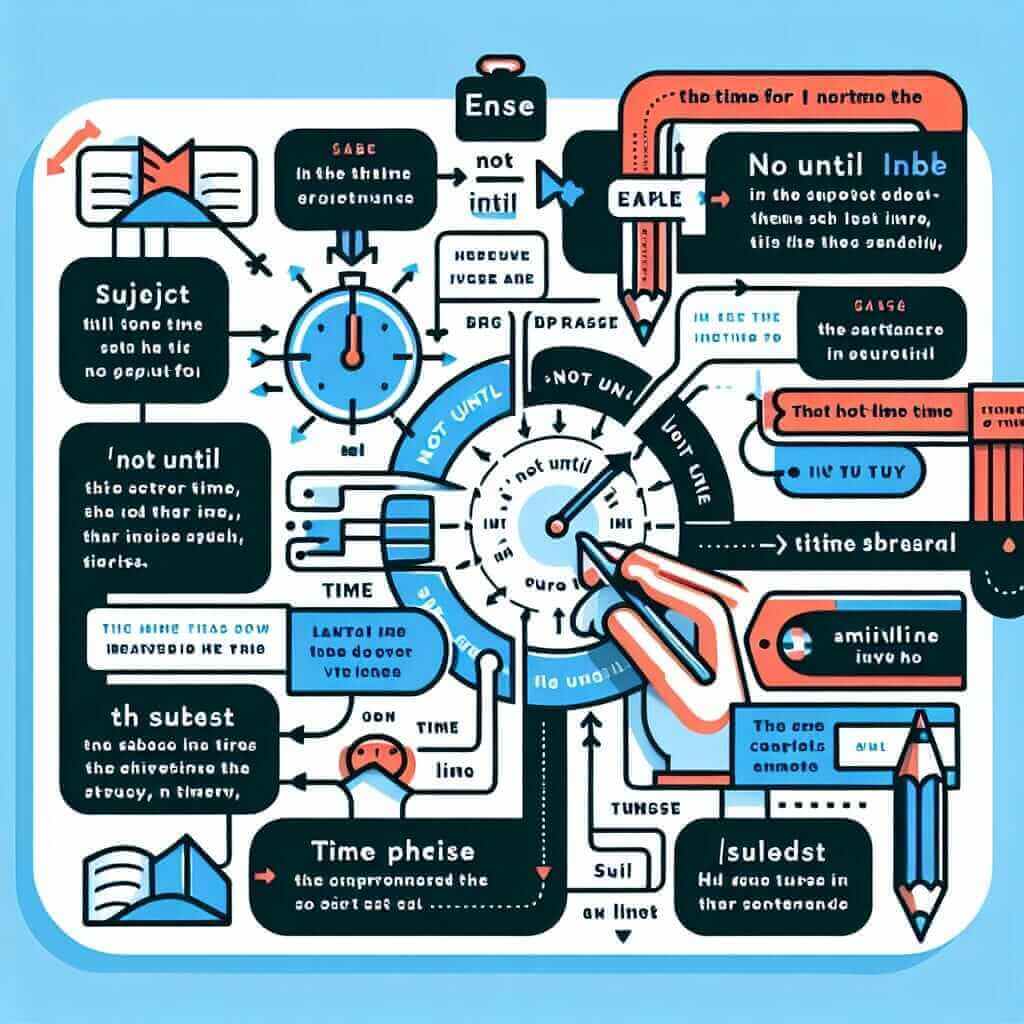“Not until he arrived did I understand the gravity of the situation.” Have you ever encountered a sentence structured like this? This construction, using inversion with “not until,” is a powerful tool for emphasizing a point in time or an event. While it might seem complex at first glance, understanding its structure and usage can significantly enhance your IELTS writing and speaking, helping you achieve those coveted high bands.
Examples:
- Speaking (Part 2): “Not until I started travelling solo did I truly discover my independence.” (This emphasizes the transformative experience of solo travel.)
- Writing (Task 1): “The graph shows a steady increase in sales. Not until 2010 did the figures surpass the 10,000 mark.” (This highlights the significance of the year 2010 in the data.)
- Writing (Task 2): “Some argue that happiness can be pursued. However, not until we learn to appreciate what we have can we truly experience contentment.” (This adds weight to the argument by placing emphasis on the importance of gratitude.)
Deconstructing “Not Until” Inversion
This structure signifies that something didn’t occur until a specific event. It injects a sense of drama or emphasis, making your language more engaging and sophisticated.
Frequency in IELTS
While not overly common, using “not until” inversion strategically demonstrates a mastery of complex grammatical structures. This can contribute to a higher score in the ‘Grammatical Range and Accuracy’ criterion.
The Formula: Inverting for Impact
Structure:
Not until + Time Phrase/Clause + Auxiliary Verb (did/do/does/had/have) + Subject + Main Verb
Breakdown:
- “Not until”: This phrase sets the stage for the delayed action.
- Time Phrase/Clause: This pinpoints the event that had to occur first. (“he arrived,” “2010,” “we learn to appreciate…”)
- Auxiliary Verb: This depends on the tense of the main verb. (“did” for past simple, “do/does” for present simple, “had” for past perfect, etc.)
- Subject: The performer of the action in the main clause.
- Main Verb: The action that happened as a result.
Example:
- Normal Sentence: I didn’t understand the problem until he explained it.
- Inversion: Not until he explained it did I understand the problem.
 Not Until Inversion Example
Not Until Inversion Example
Mastering Inversion in IELTS Tasks
Writing Task 1 (Describing Trends)
Use inversion to emphasize significant points in graphs, charts, or diagrams.
Example:
“The unemployment rate remained relatively stable until the economic downturn of 2008. Not until this point did the figure exceed 8%, highlighting the severe impact of the recession.”
Writing Task 2 (Expressing Opinions)
Incorporate inversion to present arguments or counterarguments more forcefully.
Example:
“While technology offers convenience, some believe it hinders genuine human connection. Not until we disconnect from our devices and engage in face-to-face interactions can we truly foster meaningful relationships.”
Speaking
Emphasize personal experiences or viewpoints with inversion to add fluency and impact.
Example:
Examiner: “Tell me about a time you had to overcome a challenge.”
You: “Well, I was terrified of public speaking. Not until I joined the debate club did I start to feel comfortable addressing an audience.”
Elevating Your Language: Beyond the Basics
- Using negative adverbials: Similar inversions are possible with “never,” “rarely,” “seldom,” etc. (Example: “Never before had I seen such beauty.”)
- Varying sentence length: Combine short, impactful sentences with inversion and longer, complex sentences for a more sophisticated writing style.
Common Pitfalls to Avoid
- Incorrect auxiliary verb: Ensure the auxiliary verb agrees with the tense of the main verb.
- Overusing inversion: While effective, using it too often can sound forced. Use it sparingly for maximum impact.
Conclusion
Mastering “not until” inversion is like adding a powerful tool to your IELTS language toolbox. By understanding its structure, practicing its use, and avoiding common errors, you can make your writing and speaking more sophisticated, impactful, and ultimately, help you achieve your desired IELTS band score.


